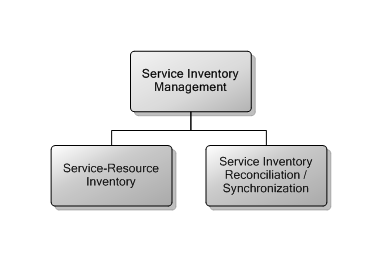

Service Inventory Management represents the applications which contain and maintain information about the instances of services in a telecom organization.
A Service Inventory application may store and manage any or all of the following entities:
The Service Inventory may also store and manage service relationships:
This mapping is stored either intrinsically in the core Service Inventory, or discretely via Service-Supporting Resource Inventory applications.
Service
Inventory may include the following relationship types between entity
instances:
·
Realization by
Composition – A mapping from a service to the child services and/or resources
which specifically compose that service (e.g. the RFS instance or instances
whose whole purpose is to implement a CFS, the assignable resources which
realize an RFS). If a parent service is torn down, child objects with a
Composition relationship are typically removed or reallocated (e.g. transitioned
to spares inventory).
·
Realization by
Aggregation – A mapping from a service to the services and/or resources which
support this service in addition to other services. (e.g. a network access RFS
which supports a number of different network CFSes). If a parent service is torn
down, child objects with an Aggregation relationship are typically maintained as
long as at least one other parent service still exists.
· Dependency – A link between services and/or resources which is not strong enough to qualify as Composition or Aggregation, but where various Fulfillment, Assurance, and Change Management processes need to be aware of the relationship. Dependency relationships support the ability for change management processes to evaluate if a dependent service or resource may be impacted by changes to a specific
This was created from the Frameworx 16.0 Model